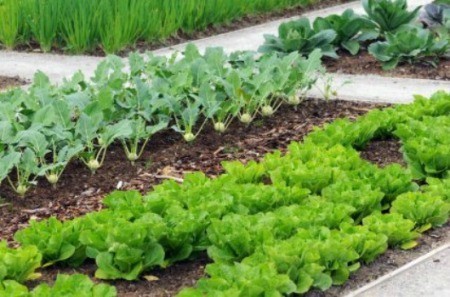Crop rotation is the practice of growing related crops in different areas of the garden in consecutive years. Rotating crops helps maximize yields by making the most efficient use of the nutrients in your soil, and reducing the likelihood of soilborne pests and diseases.
Several vegetables, including perennials like asparagus and globe artichokes, do not fall into any of the main vegetable families. Because these stay in place for several, they are best grown in a permanent bed of their own and not rotated. Because salad greens stay in the ground for only a short time, they can be used to fill in or grown in between other plants. As with other vegetables, they should not be grown in the same area year after year.
Draw up a list of the main vegetables that you want to grow, with a rough indication of quantities. Divide the vegetable garden in sections and group the selected vegetables in their rotation groups. Make a separate list of miscellaneous vegetables not in the main groups and use these vegetables to fill in bare spots. Think about how each crop affects the soil. It is a heavy feeder, a light feeder, or a soil builder? When possible, try to alternate heavy feeders with either light feeders or soil builders.
The following plan is only meant to serve as a rough guide. Many factors, in particular the weather, will have a direct bearing on the success and failure of your crops. The key to success lies in keeping accurate records of your planting and remaining flexible to making necessary changes in your plan.
Section #1: Legumes and Pod Crops
beans (all types)
lentils
okra
peas (all types)
Rotate to Section #2
Section #2: Allium (Onion Family)
garlic
leeks
onions
scallions
shallots
Rotate to Section #3
Section #3: Brassicas (Cabbage Family)
bok choi
broccoli
Brussels sprouts
cabbages
cauliflowers
kales
kohlrabi
mustard greens
oriental mustards
radishes
rutabagas
turnips
Rotate to Section #4
Section #4: Solanaceous, Root, and Tuberous Crops
beets
carrots
celeriac
celery
eggplants
parsnips
potatoes
sweet peppers
sweet potatoes
tomatoes
Rotate to Section #1

Add your voice! Click below to comment. ThriftyFun is powered by your wisdom!